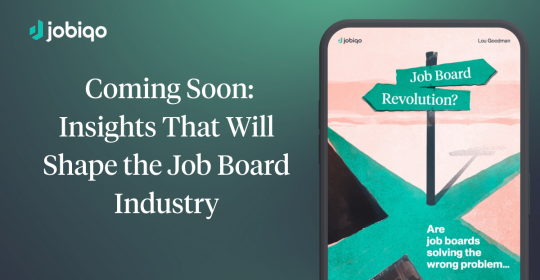The Case For ìTotal Workforce Managementî Solutions:
Why one integrated e-HR solution for hiring, managing and analyzing your permanent and temporary workforce is necessary. There are about 12 million contingent workers in North America, representing a roughly $75 billion dollar industry. Employersí use of contingent labor and workersí willingness to be ìfree agentsî, are both on the rise. As we all know, the contingent labor force is usually the first to boom when an economy is coming out of recession.
Vendor Management Systems:
Large employers have been using Applicant Tracking or Talent Management Systems (TMS) for several years to improve the processes around hiring permanent staff. The less mature Vendor Management Solutions (VMS) industry has sprung up to support the hiring and management of temporary and contract workers. According to Debbie McGrath, CEO of HR.com, ìmanaging your contingent workforce is a critical issue for large organizations. With the streamlining and centralizing of functions like billing, tracking and performance monitoring, Vendor Management Systems can automate these processes and show significant savings.î The same is true for organizations that contract with Managed Service Providers (MSPs), in these cases, a VMS will aid in the selection, cost management and administrative functions in much the same manner.
Staffing firms have developed an interest in VMS quickly over the past couple of years. As increasing numbers of organizations look to contingent labor as an area to increase efficiencies and lower costs, progressive suppliers have been quick to offer their customers managed VMS solutions. Kelly Services, Inc. for example, manages centralized contractor acquisition programs and centralized vendor management solutions for its clients.
Sue Marks, Vice President of Kelly HR Solutions Group, a business unit of Kelly Services, Inc. says, All of our new programs are powered by Web-based technology and our existing clients are migrating to them. We find that once clients get used to the changes in process--they order on line instead of over the phone--they are very happy with the reduction in administrative activities, the real time reporting, the 24 x 7 access and the increased speed. Contract labor is usually an organization's largest indirect spend, yet it remains one of the most loosely managed. A strong program, coupled with the new Vendor Management Solutions technology, makes significant savings and production improvements possible. Finally, at the end of the day, these Web-enabled programs help companies acquire the best talent at the best price.
Advantages of Combining VMS with TMS:
Organizations are saving significant time and money with both VMS and TMS, but much greater efficiencies are possible by combining the two. Chris Colbert, Human Resources Technology Manager at Siemens agrees, An integrated talent acquisition system would provide greater ROI by reducing the number of point solutions needed to build a complete workforce. Reporting and workforce planning would also be enhanced by having tools for vendor management and permanent recruiting in one system. Some TMS providers claim to offer vendor management modules. What these modules typically do is allow hiring managers and recruiters to post their requisitions to preferred staffing vendors and independent recruiters. Some give vendors a secure window to the TMS so they can submit candidates for consideration, communicate, and generally collaborate with internal staff to fill positions.
This is where they tend to stop, however. True vendor management solutions offer contingency workforce management tools ñ where the majority of ROI is realized. Integrated recruiting (including resume tracking, pre -screening and matching) of the temporary workforce coupled with time and expense tracking, vendor and candidate quality monitoring, approvals, consolidated billing and attendance round out whatís necessary.
ìTotal Workforce Acquisitionî solutions would let an organization use one system to post a requisition for permanent, contract or temporary workers. This would include the flexibility to hire a combination of the above under one requisition. For example, suppose a company is looking for five technical writers, two of which will be full-time and the other three on one-year contracts. The hiring manager needs to be able to configure workflows on the fly so that the full-time hires go through their necessary approvals and stages while the temporary hires follow a different workflow.
How an Integrated Approach Would Work:
In an integrated, seamless approach, the hiring manager would select where the requisition is to be distributed for the full-time hires (i.e. intranet, corporate career site, job boards, recruiters, etc.) and the organizationís approved staffing agency vendors for the temporary hires. The hiring manager should also be able to use the system to hire someone into the job temporarily and quickly (through a staffing agency) while the lengthier process of filling the position permanently is launched at the same time.
The applicants and the candidates submitted by staffing firms would come back to the hiring manager appropriately flagged, pre-screened and ranked. The system would facilitate notes and communication between the hiring manager and vendors where necessary. It might also promote price/service competition between vendors, and at the very least, inform hiring managers of the benchmark prices for temporary, hourly and contract workers in their areas for the position in question.
The system would track both permanent and temporary candidates through the process; interview scheduling, tracking correspondence, decisions, etc. Permanent and temporary candidates would route to different parts of the integrated systems for payroll, timesheets, attendance, performance pay, etc.
The VMS portion of the integrated tool would consolidate invoicing to the vendors and handle automated payments to contractors and consultants. For reporting, it would be possible to benchmark against other similar organizations to compare vendor rates, contingent worker salaries, process efficiencies, etc. As with TMS, the VMS portion of the system should track related budgets and use alerts to warn procurement or HR managers when contracts are expiring, for instance, or diversity targets not being met. ROI calculators should be capable of determining time and cost savings on a continuous basis. The system should contain an element of vendor and worker evaluation.
All permanent and contingent worker data would merge at the backend for complete workforce statistics, analytics, ad hoc reporting, affirmative action planning, workforce planning and cost/ROI information. This is the second major benefit of integrated TMS and VMS ñ a much more holistic and complete view of the entire workforce.
A ìTotal Workforce Managementî solution would connect EEO/diversity systems and workforce planning components with VMS and TMS (including internal and alumni) seamlessly. This along with performance and learning management might give organizations the first automated 360 view of their entire workforce. This might allow them to monitor performance against diversity targets, time and cost to hire goals, retention efforts, track skills and competencies, determine which positions are better to staff full-time versus with temporary staff, assess the performance and quality of staffing agency vendors as well as the candidates they refer, determine training and development needs and, in effect, properly align corporate objectives to available human capital once and for all.
Who In The Organization Owns Total Workforce Management?:
Though at least two different parts of the organization need to be involved in administering and ìowningî the software, their different interests might actually aid in the process. Procurement/Purchasing cares about contracts, prices, and legalities, etc. The HR function, on the other hand cares more about people, quality of hire and best fit. Neither is usually interested in doing the otherís job. Therefore, as Jim Grundner, V.P. at Peopleclick puts it ìboth functionsí strategic goals can be achieved while eliminating the conflicts caused by operating two disparate systems.î
It is becoming clear that workforce management decisions should be reshaped to maximize the total workforce. Whether you are in the market for a TMS or VMS, it would be prudent to insure platform integration down the road. A few Human Capital solutions providers are currently making efforts to combine tools that help organizations recruit and administer their permanent and contingent workforces. The first generation of fully integrated TMS/VMS tools are in the works. Further integration with workforce and affirmative action planning tools and then performance and learning management must follow.
Allan Schweyer
aschweyer@hr.com
www.hr.com
Allan Schweyer has been involved in Internet recruiting since 1994 when he pioneered e-recruitment solutions for Human Resources Development Canada. From 1995 to 1999, Allan directed the award-winning National Graduate Register, Campus WorkLink and SkillNet.ca programs with Industry Canada, which introduced the concepts of applicant tracking and advanced screening to job boards and ìcareer networksî to job seekers. In 1999, Allan formed the On-line Recruitersí Association of Canada. In 2000 and 2001, he worked with Cahners Business Information in Boston to build information portals for technical professionals and attended graduate school at Harvard University. Allan currently consults with large organizations on HR strategies and specializes in e-recruitment projects. He is a senior researcher and analyst with HR.com and the guest editor of the HR.com staffing vertical.
TMS (Talent Management Solutions) and VMS (Vendor Management Systems)

The Staffing Files <br>Allan Schweyer<br>





